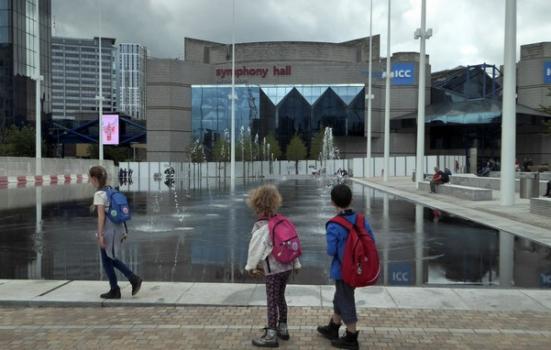An upward trend over recent years has reversed - and it's not all because of the pandemic.

Chris Allen
Funded arts organisations' income took a hit in the last financial year, falling by 2.3%.
Data released by Arts Council England (ACE) shows the income of its National Portfolio Organisations (NPO) dropped by £38.3m between 2018/19 and 2019/20.
Among the 565 NPOs for which there are data for both years, the value of ACE subsidies fell by 0.4% and earned income by 4.4%.
READ MORE:
The data, which show a loss of £1.3m in earned income, hint at the scale of devastation we might expect to emerge in figures for 2020/21, which are not yet available.
Given the 2019/20 figures only cover a couple of weeks of lockdown, it appears Covid-19 alone is not responsible for the decline.
The fall in income has not harmed engagement with the arts, comparison of a constant sample of NPOs reveals. ACE subsidy fell by 24p per attendance in the 2019/20 year as the total number of people accessing performances, screenings, exhibitions and festivals grew by 3.5% to reach about 91.1 million.
When the full current portfolio of 765 organisations is considered, attendance rises to more than 132 million.
A separate set of figures for DCMS sponsored museums illuminates a similar growth in visitor numbers pre-pandemic (the museums are free to enter).
Total visits for the year excluding March were up 1%, but the "lockdown measures changed the trend of total museum visitor numbers from increasing to decreasing" by 4.4%, the department reports.
The income of DCMS funded organisations, which includes ACE, the British Film Institute, Historic England, British Library and the 15 sponsored museums, also fell by 2.3% in 2019/20.
Regional disparity
Yorkshire NPOs that provided data for consecutive years lost the most income - £30m, or 25% of all earnings and subsidies and between 2018/19 and 2019/20.
Organisations in the West Midlands were second hardest hit, losing £15.43m, followed by London (down £12.65m).
A few regions' organisations grew their income: those in the South East added £11.32m, North West NPOs added £8.5m, and income in the South West grew by £1.2m.
ACE's data shows which regions generated the most income pre-pandemic and therefore will be most vulnerable to the vicissitudes of Covid-19.
NPOs in the West Midlands drew the highest proportion of their income from their own earnings at 61.2%.
Most regions' organisations, including those in London, the South East, South West and Yorkshire, generated at least half of their income from earnings in the last financial year.
The east of England had the lowest proportion of income from earnings (32.8%).
Museums' earnings
Sponsored museums fundraised £422m in 2019/20 - 46p for every pound of government investment they received.
This is a slight increase (3.8%) on the year prior, when they fundraised 44p per pound.
DCMS subsidies make up a higher proportion of museums' income than ACE support does for NPOs - 29.5% compared to 22%.
These 15 museums earned and fundraised £315m in the last financial year, a 9% increase on 2018/19, while 765 NPOs collectively earned £967.6m.
DCMS attributes a 2.3% drop in the income of all its funded organisations, arm's-length bodies included, to the pandemic: "It is possible that a reduction in visitors, including those from overseas as travel restrictions and lockdowns were introduced, may have affected the ‘other income’ segment as this includes income from admissions and retail sales."
"Some museums and galleries also had to cancel large charity events scheduled for the end of March, which may have affected their fundraising income."



